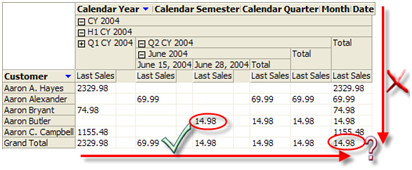SQL Server 2008 February CTP Is Out
February CTP is out. It brings the much anticipated integration with Visual Studio 2008 and the new BIDS Report Designer.
Download the February CTP here:
http://www.microsoft.com/sql/2008/prodinfo/download.mspx
Updated Books Online for February CTP are available here:
http://www.microsoft.com/downloads/details.aspx?familyid=19DB0B42-A5B2-456F-9C5C-F295CDD58D7A&displaylang=en
What’s new in Reporting Services February CTP (compared to the previous November 2007 CTP):
- Support for Microsoft Word Rendering
This allows users to render reports as Word documents that are compatible with Microsoft Word 2000 and greater.
- Data Visualization Enhancements
Data Visualization Enhancements provides significantly improved support for Chart and adds support for Gauge controls directly within reports.
- SQL Server 2008 Reporting Services Add-in for Microsoft SharePoint Technologies
The SQL Server 2008 Reporting Services Add-in for SharePoint Technologies allows you to take advantage of SQL Server 2008 report rendering, processing and management capabilities in SharePoint Integrated mode. This version includes Data-driven subscriptions.
- Report Design Enhancements in Business Intelligence Development Studio (BIDS)
BIDS overall has been migrated from a Visual Studio 2005 to Visual Studio 2008 platform. In addition, the report design tools found in BIDS were significantly updated for Reporting Services. Updates include:
– the more powerful Tablix based Tables, Lists, Matrices
– the Report Data window for easier interaction with data fields
– the integration of data visualization enhancements (Chart, Gauge)
– new dialogs throughout the design experience
- Throughput Enhancements
Further improvements in report rendering throughput, the number of reports rendered in a given amount of time for several types of workloads.





